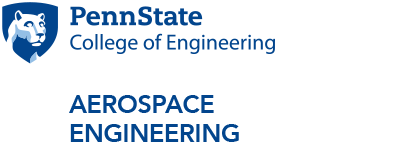Water Channel/Water Tunnel
Laminar Flow Water Channel
The Laminar Flow Water Channel is used predominantly for undergraduate student experiments in the AERSP 305 laboratory course, and is popularly featured during many department tours. Course-related experiments include determining fluid dynamic lift force, drag force and pitching moment on a 3D model, wake vortex visualization behind an airfoil, general flow visualization around a fully (or partially) submerged vehicle, and comparison and testing of various visualization techniques.
Research has also been performed in this facility, some of which involves boundary layer growth, LDV measurements, hydrogen bubble visualization, ocean paravane development and testing, and preliminary development of micro-scale water turbines.
Key Faculty: Rick Auhl
Water Channel Features:
- Closed-return circuit: 31.5' x 6.6' x 5.2' (9.6 m x 2.0 m x 1.6 m)
- Open surface test section: 2.6' x 1.6' x 12' (0.8 m x 0.5 m x 3.7 m)
- Water Speeds: 0.1 to 3.0 fps (0.03 to 0.9 m/s)
- Typical Reynolds-number range: 50,000 to 100,000
- Typical Froude-number range: 0.3 to 0.5
- 3D wake survey capability behind models
Garfield Thomas Water Tunnel
Located in Penn State’s Applied Research Laboratory, the Garfield Thomas Water Tunnel (GTWT) is the U.S. Navy’s principal experimental hydrodynamic research facility.
The GTWT is a 48-inch diameter, closed-circuit, closed-jet water tunnel used for a variety of tests: steady and unsteady forces and moments, optical flow field surveys, pressure distributions, cavitation performance, noise and vibration measurements, flow visualization, torque, and thrust.
Facilities and Labs
- Adverse Environment Rotor Test Stand
- Aeroacoustics Facilities
- Air Vehicle Intelligence and Autonomy Lab
- Control and Analysis of Stochastic Systems Lab
- High-performance Computing Cluster Facility
- Indoor Flight Research Lab
- Robot Ethics and Aerial Vehicles Lab
- Rotorcraft Flight Simulator Facilities
- Sailplane Lab
- Space Propulsion Lab
- Structures Labs
- Student Space Programs Lab
- Turbomachinery Aero-Heat Transfer Lab
- Water Channel/Water Tunnel
- Wind Tunnels
- Wind Turbine Field Test Facility



